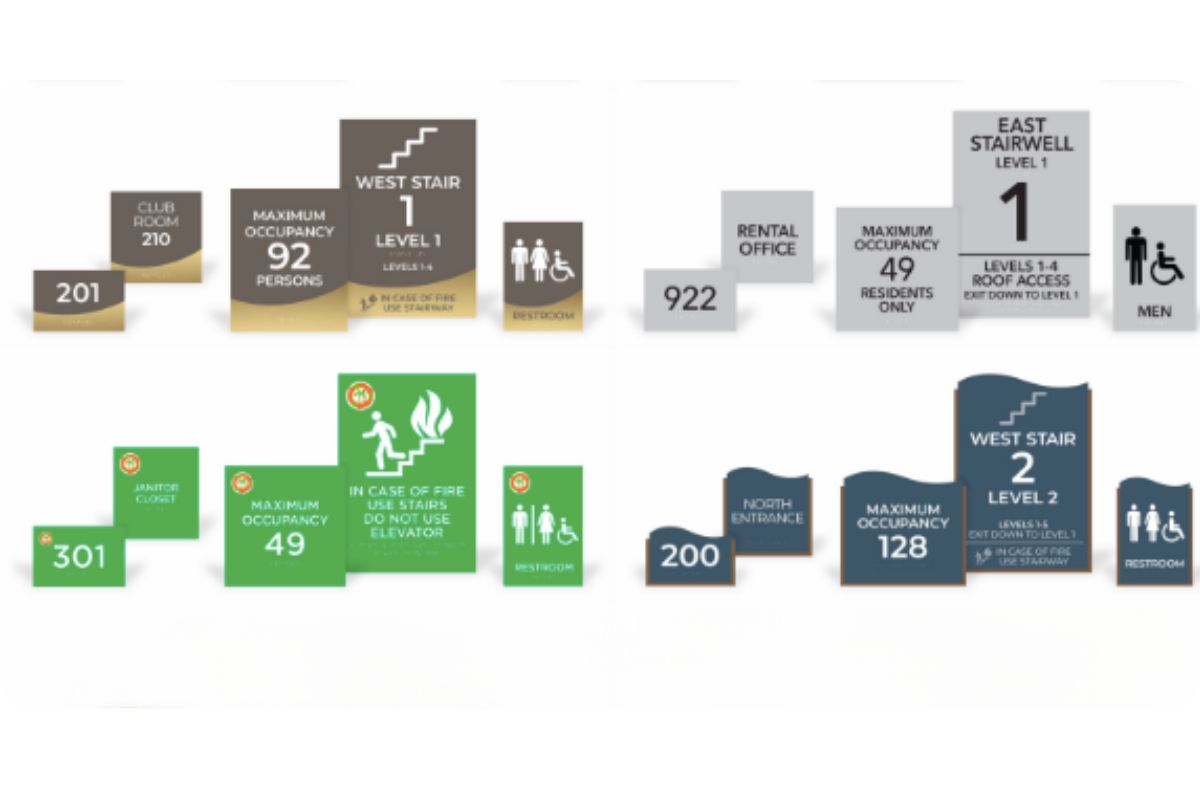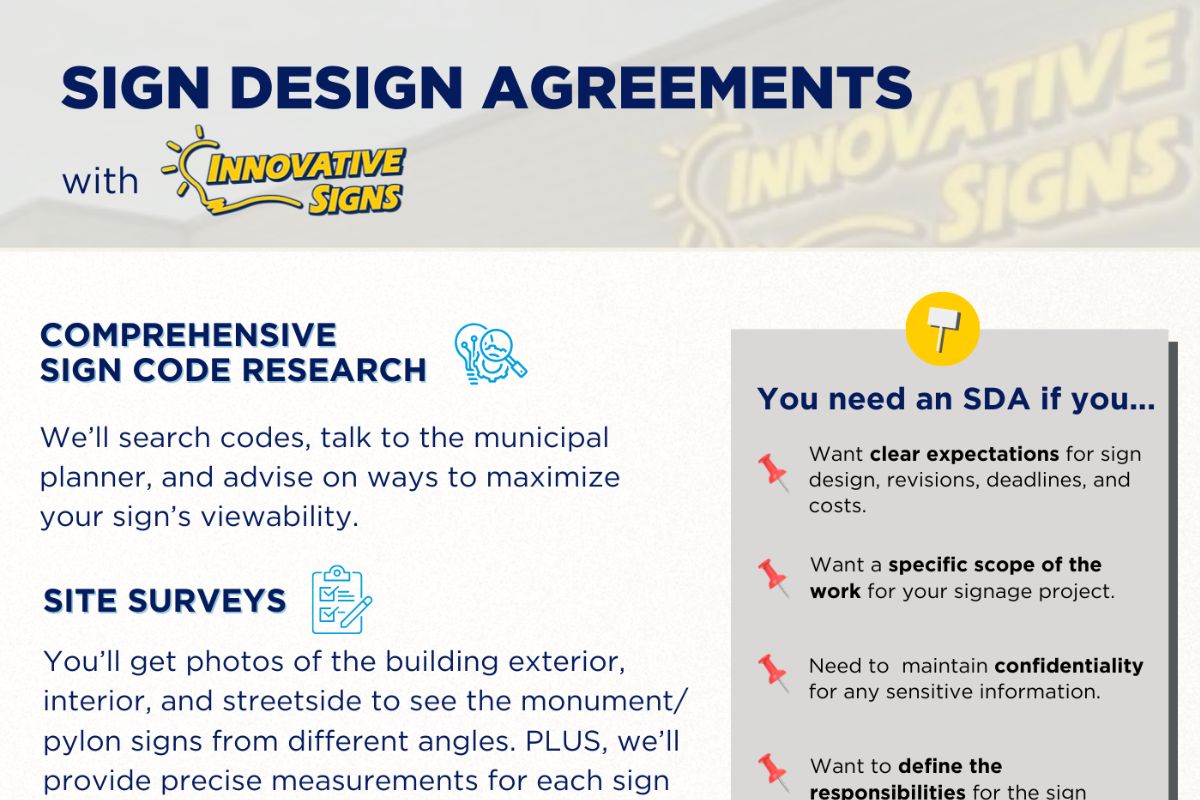Navigating ADA Sign Compliance: A Business Owner’s Guide
Let’s delve into the critical world of ADA-compliant signs for businesses.
Navigating the complexities of the Americans with Disabilities Act (ADA) can be daunting for business owners and contractors alike. Understanding the importance of these signs, not only for legal compliance but also for ensuring accessibility to all customers, is essential.
In this guide, we’ll walk you through everything you need to know about ADA signs, from their design and placement requirements to the process of obtaining them through a signage company. Whether you’re updating your existing signs or starting from scratch, this can be your go-to resource for making your business more inclusive and compliant.
And who doesn’t want that?
ADA Signs: What To Know
Business owners and general contractors need to be aware of several key aspects regarding ADA (Americans with Disabilities Act) compliant signs:
1. Location and Height:
ADA signs must be placed at specific locations, such as next to doors or in hallways. The height of these signs must be easily reachable and visible, typically between 48 to 60 inches from the ground.
2. Braille and Tactile Characters:
ADA signs require Braille for visually impaired individuals. Tactile characters (raised) are also necessary for those who need to feel the sign’s letters or pictograms.
3. ADA Signs Need High Contrast and Readable Fonts:
There should be a high contrast between the text (or pictogram) and the background for better visibility. The fonts used must be easy to read and generally sans-serif.
4. Non-Glare Finish:
The signs should have a non-glare finish to be easily readable under different lighting conditions.
5. ADA Sign Pictograms:
When used, pictograms must be accompanied by descriptive text and Braille. These symbols should be simple and easily understandable.
6. Directional and Informational Signs:
These signs should provide clear guidance around the facility, especially towards accessible features like elevators, restrooms, and exits.
7. Updating Existing ADA Signs:
If a business or building is being renovated or updated, the signs must also be updated to comply with current ADA standards.
8. State and Local Regulations:
Apart from federal ADA guidelines, there may be additional state or local regulations that need to be followed.
9. Penalties for Non-Compliance:
Non-compliance with ADA sign requirements can result in legal consequences, including fines and mandatory modifications.
It’s important for business owners and contractors to consult with ADA compliance experts or use resources provided by the ADA to ensure all signage meets the necessary standards. Regular updates and audits of signage may also be necessary to maintain compliance as standards evolve.
ADA Signs: Working With Your Sign Company
Obtaining ADA-compliant signs through a signage company typically involves several steps:
1. Assessment of Needs:
The first step is to assess your specific needs for ADA signs. This includes determining the types and quantities of signs required for your facility, considering factors like the number of rooms, exits, restrooms, and other public areas.
2. Choosing a Signage Company:
Select a signage company that has expertise in ADA-compliant signs. It’s important to choose a company that is knowledgeable about the ADA guidelines and has experience in creating compliant signs.
3. Consultation and Design:
Schedule a consultation with the signage company to discuss your requirements. The company will usually offer design services where they create sign designs that comply with ADA standards, including font, size, contrast, tactile elements, and Braille.
4. Review and Approval:
Review the designs proposed by the signage company. Ensure that they meet both your aesthetic preferences and the ADA requirements. Once you approve the designs, the company will move forward with production.
5. Production:
The signage company produces the signs as per the approved designs. This process involves precise work to include tactile characters, Braille, and appropriate color contrast.
6. Compliance Check:
Once the signs are produced, they should be checked for compliance with ADA standards. Some companies might offer a compliance check as part of their service.
7. Installation:
After the signs are produced and compliance is ensured, the signage company will typically handle the installation process. Proper installation is crucial to meet ADA requirements, particularly regarding the height and location of the signs.
8. Final Inspection:
After installation, conduct a final inspection to ensure that all signs are correctly placed and meet the necessary standards.
9. Follow-Up and Maintenance:
Establish a relationship with the signage company for future maintenance or updates as needed, especially if regulations change or if your facility undergoes renovations.
Throughout this process, clear communication with the signage company is key to ensuring that your needs are met and that all signs are fully compliant with ADA standards.
Ensuring your ADA signs are compliant is more than a legal requirement; it’s a commitment to inclusivity and accessibility. By following the guidelines and working with knowledgeable signage companies, you can effectively navigate the world of ADA signage. Stay proactive in understanding and implementing these standards, and you’ll contribute to a more inclusive environment for your customers and the community.








